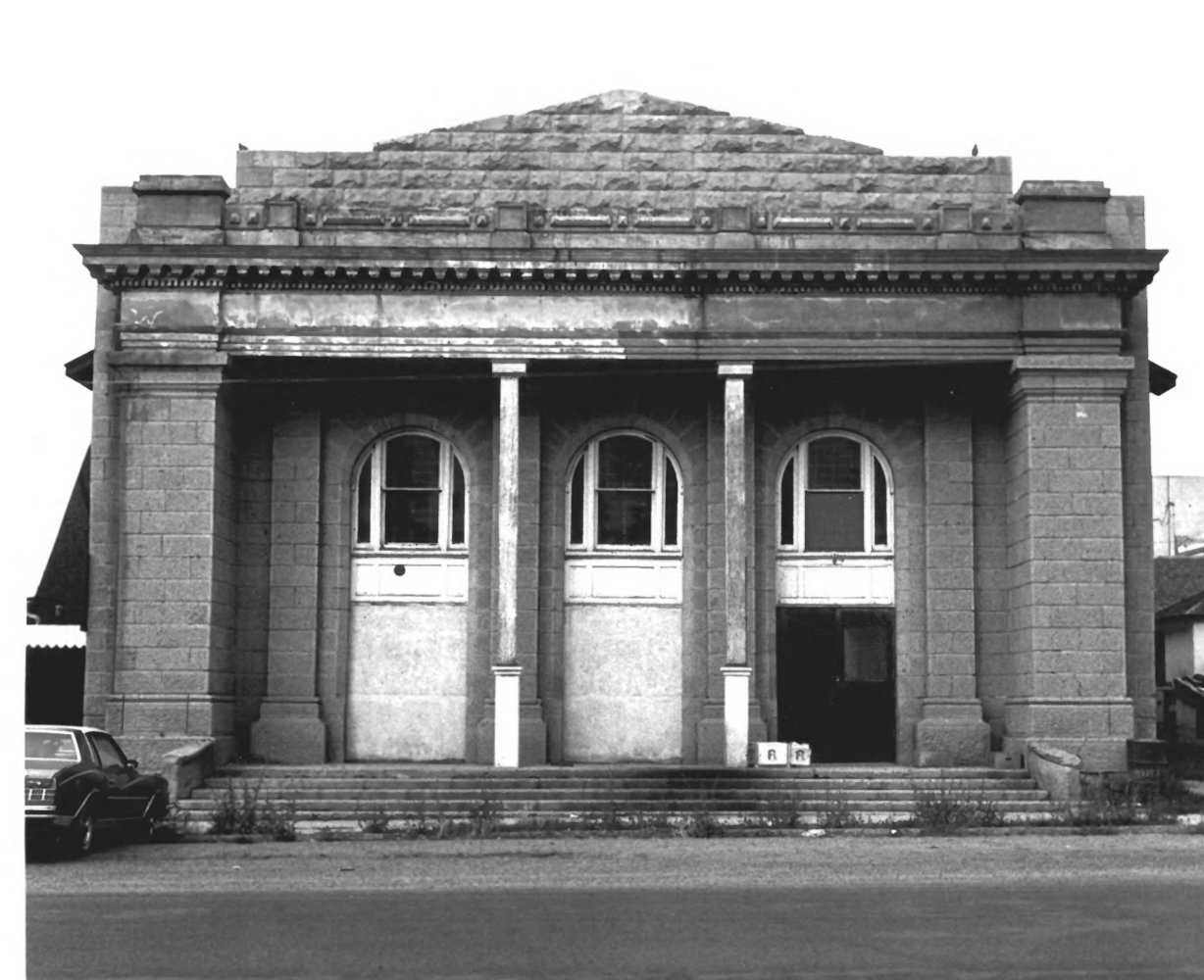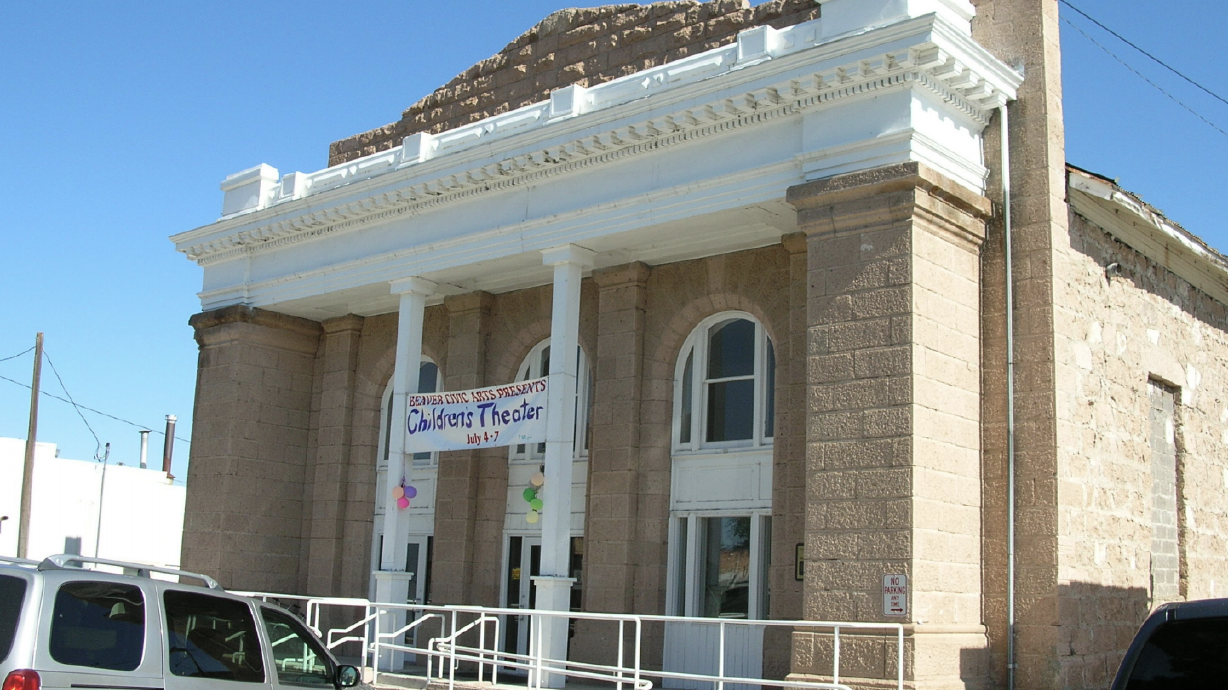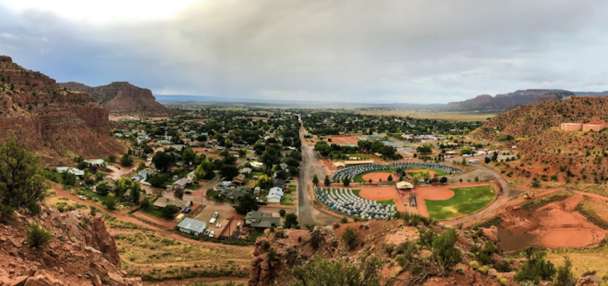Estimated read time: 7-8 minutes
This archived news story is available only for your personal, non-commercial use. Information in the story may be outdated or superseded by additional information. Reading or replaying the story in its archived form does not constitute a republication of the story.
Editor's note:This article is a part of a series reviewing Utah and U.S. history for KSL.com's Historic section.
BEAVER — Alison Webb remembers performing in plays inside the Beaver Opera House after it was renovated for the first time in the 1980s.
It may not have been Broadway, but it was a vast improvement from the southern Utah community's temporary theater before that: a historic courthouse located across the street.
Children no longer needed to use the judge's chambers as a dressing room and there wasn't a court railing in the way of the performance. For her at the time, having a real stage and a curtain meant everything. Looking back at it now, she credited the Beaver Opera House and those childhood plays for instilling confidence in her adult life.
She wasn't alone in having an appreciation of the building. The Beaver Opera House, completed in 1909, became a fixture in the community not just for entertainment; it was used as everything from a community center to an armory for the small city of just over 3,000 residents.
So when the historic building began to again show wear and tear, as it did before the 1980s, Webb and other community members took action. They believed it was too valuable for the community to let it end up like many other older buildings in the city or even across the country.
"We have had several beautiful old buildings that were torn down, and we wanted to preserve this building because it's a pillar in our community," Webb told KSL.com on Thursday.
Webb, now a Beaver City Council member, oversaw most of a $1.2 million renovation project to preserve the structure. It will have new life as the Philo T. Farnsworth Opera House, which is a nod to the inventor of the television and the small city's favorite son.
The city plans to celebrate the completion of the project Saturday, which happens to coincide with the 165th anniversary of the city being settled.
Here's a look into why the building is so near and dear to residents like Webb, and how they fought to preserve it.
A building unique to the community
Construction of the opera house began in March 1908 at a cost of about $20,000, according to a report completed by the Beaver County Development Company in 1980 as it sought to add the structure to the National Register of Historic Places.
In many ways, the building matched the aspirations of community leaders to ensure it was the envy of other communities, the report pointed out. Original plans by architects Niels Edward Liljenberg and Emil Maeser called for a third-story balcony, an auditorium and stage on the second floor, and a dance pavilion on the first floor.
While the finished product wound up less grand, it still provided residents with an auditorium that could be used as a dance pavilion, a gymnasium and a theater.
Liljenberg and Maeser, who would go on to complete several historic buildings in Utah in their lifetimes, used a pinkish stone called tuff that was prevalent in Beaver County and used for many other buildings across the area.
"The Opera House was one of the several buildings that constituted the beginning of what was termed 'the New Beaver,'" the 1980 report stated. "The board of directors for this building was quoted as having said that 'no money or labor will be spared in making this the finest playhouse south of Salt Lake, ... nothing is too good for the people of Beaver.'"

The building was originally used for plays, as well as community and church events. Some of the biggest actors of the 1910s and 1920s — like Ralph Cloninger and Luke Cosgrove — performed there. As motion pictures became more popular in the 1920s, it became a theater for silent films as well.
The Utah National Guard used the building for offices and storage space from 1929 through 1955. That use left most of the interior "barn-like" by 1980, the Beaver County report stated. By that point, the city wanted to restore the building as a community center and a senior citizens recreational center, which it did.

The report asserted that the opera house was "locally significant as an indicator of the aspirations of the citizens of Beaver to build a 'New Beaver' that would be the envy of other communities" and that it also reflected "the special importance of community entertainment in the culture of Utah." The Department of Interior agreed, adding the building to the Register of Historic Places in 1982.
By that point, it was one of just a handful of remaining opera houses from the 30 or so constructed in Utah. Many of the others were torn down or completely destroyed by 1980. Webb said the city set aside $40,000 around that time to do renovations, which helped improve the building but didn't fix many structural issues with it.
Prior to the COVID-19 pandemic, she said it was used as a senior citizens center three times a week and a theater for youth plays put on by Beaver Civic Arts.
The fight for preservation
The building remained in use as a valued piece of the community, but it was once again in need of repair a few decades after its renovation in the 1980s, Webb said. There were issues with air circulation and holes where the trusses were located. It was also prone to collapse if there was an earthquake.
"It just needed sort of a revamp," she said.
The seed money for the project began after the community was originally set to receive the statue of Farnsworth that was located in the U.S. Capitol, but those plans fell through. The statue of Farnsworth that was placed inside the Capitol Visitor Center in 1990 is set to be replaced with one of Martha Hughes Cannon, who was the nation's first woman to serve as a state senator when she was elected in Utah in 1896.
After the original plan failed, the state legislature still awarded the city $300,000 toward the project that would honor Farnsworth anyway, Webb said.
Beaver City Recorder Anona Yardley sent out applications for various state and federal grants; in all, the city received close to $900,000 in grants to preserve the building. The city took out a loan for another $200,000 and received some private donations that helped the city afford the cost of the major renovations.
The project began in fall 2019. Crews replaced the entire roof and shored up the building's foundation. They also made changes so it was closer to the original plans for the building.

"It was really interesting, as some of the renovations began, to see the work of people's past," Webb said. "They obviously cared and wanted to make a beautiful building, so we tried to bring back a balcony that overlooks the foyer area. … One of my very favorite things about the building is they used beautiful woodwork to bring back that historic feel of how that building should have been."
The artwork inside the building was chosen to reflect the city as a whole.
The renovated building is one city officials believe will again be a place that unites the small community. The changes will allow it to host an array of events that range from weddings to public meetings to community plays.
Webb said she hoped that it would help the next class of children performing in plays to wind up with the same confidence that the theater gave her as a child. Overall, she said just the ability to preserve the building for the community was "very fulfilling."
"It was really that labor of love that we could preserve this building and preserve some of the history in Beaver for future generations," she said. "It's really just a great feeling."
A celebration for the city
The city has scheduled a ribbon-cutting ceremony and an open house for noon on Saturday. The date wasn't an accident; it falls on the same date the city was first settled in 1856 — 165 years ago.
Due to COVID-19, the ceremony won't nearly be as grand as they would have preferred. For instance, Webb said that they uncovered a historic photo of a parade that was once held outside of the opera house.
There will be some performances on the stage during the open house, which will continue until 2 p.m. Saturday. Webb said masks will be required for those who would like to check out the renovated building.










